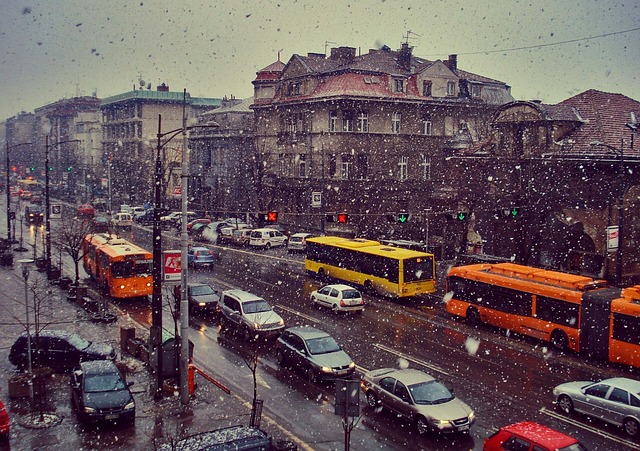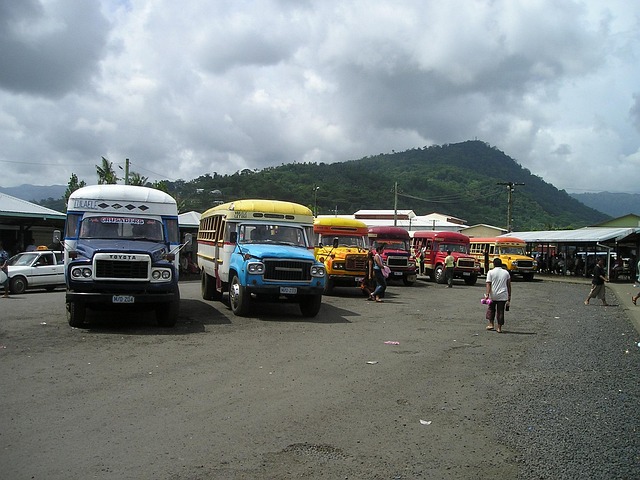Select Buses offer a personalized, efficient, and affordable transportation solution, combining optimized routes, modern amenities, and data-driven strategies. They revolutionize urban mobility by reducing traffic congestion and carbon emissions, promoting sustainable travel choices. Future advancements in technology, such as GPS tracking, real-time analytics, and enhanced connectivity, will further elevate the Select Bus experience, making it a competitive and convenient alternative to private vehicles.
“Discover the transformative power of Select Buses: high-efficiency, comfortable express bus services that redefine urban mobility. This comprehensive guide explores the multifaceted benefits of Select Buses, from their ability to streamline journeys and reduce environmental impact to their role in revitalizing public transportation. We delve into the mechanics of express routes, future trends driven by technology, and how these services are shaping urban landscapes. Understanding Select Buses is understanding a more efficient, sustainable future.”
- Understanding Express Bus Services: A Comprehensive Overview
- Advantages of Select Buses: Efficiency and Comfort Combined
- How Do Express Bus Routes Work? Planning Your Journey
- The Impact on Urban Mobility: Revitalizing Public Transportation
- Environmental Benefits: Reducing Traffic and Carbon Footprint
- Future Trends: Technological Integration in Express Bus Services
Understanding Express Bus Services: A Comprehensive Overview

Express bus services, also known as select buses or high-speed transit, are a modern transport solution designed to offer efficient and comfortable travel experiences for commuters. These services differentiate themselves through their dedicated routes, allowing them to bypass traffic congestion, making trips faster and more reliable compared to traditional public transportation. By selecting specific routes and stopping at strategically chosen locations, express buses provide a direct connection between popular destinations, catering to the needs of time-conscious travelers.
Onboard amenities such as comfortable seating, free Wi-Fi, and even onboard meals and snacks enhance the overall passenger experience. Bus drop-off points are carefully planned to ensure accessibility for all passengers, including those with limited mobility, through age-friendly bus services. Regular bus maintenance and repair practices ensure these vehicles remain in top condition, prioritizing safety and comfort during every journey. Moreover, many express bus companies now accommodate traveling with pets, further expanding their appeal across diverse passenger demographics.
Advantages of Select Buses: Efficiency and Comfort Combined

Select Buses offer a unique blend of efficiency and comfort that sets them apart from traditional public transportation. One of the primary advantages is their optimized routes and scheduling, ensuring faster commute times while reducing travel stress. These buses typically operate on fixed timetables, making it easier for passengers to plan their journeys without the uncertainties often associated with shared transport.
Onboard, Select Buses often boast modern interior designs that prioritize passenger comfort. From comfortable seating arrangements to well-lit and spacious interiors, these buses provide an enjoyable travel experience. Some even offer amenities like Wi-Fi connectivity, USB charging ports, and in some cases, vegan bus food options, catering to a wide range of passenger needs. Additionally, bus auction houses often facilitate the acquisition of such vehicles at competitive prices, contributing to their growing popularity as efficient and affordable transportation solutions.
How Do Express Bus Routes Work? Planning Your Journey

Express bus routes are meticulously planned networks designed for efficient travel. These routes connect major hubs, cities, and even remote areas, offering passengers a faster alternative to traditional bus services. The planning process involves studying commuter patterns, identifying peak travel times, and strategically positioning stops to minimise travel time. Select buses on these routes are often equipped with advanced features like GPS tracking, ensuring real-time monitoring for both passengers and operators.
When planning your journey, consider the benefits of express buses. These services provide a comfortable ride with fewer stops, allowing passengers to reach their destinations faster. Whether you’re looking for group bus bookings for a school trip, nature tourism buses for mountain tours, or simply need to commute during peak hours, express bus routes offer a reliable and efficient solution. Additionally, proper bus driver training is crucial to ensure safety features are implemented, enhancing the overall travel experience.
The Impact on Urban Mobility: Revitalizing Public Transportation

Express bus services have significantly transformed urban mobility, revitalizing public transportation and offering an efficient, cost-effective alternative to private vehicles. These Select Buses provide high-frequency routes, reducing travel times and congestion in metropolitan areas. By optimizing bus loading areas and implementing strategic bus schedules, these services cater to the diverse needs of commuters, from those traveling for work to those going on leisure trips, including transportation to the airport. This focus on accessibility and convenience encourages a shift towards sustainable mobility options, contributing to cleaner environments and more livable cities.
Environmental Benefits: Reducing Traffic and Carbon Footprint

Express bus services play a pivotal role in promoting environmental sustainability by offering an eco-friendly alternative to private vehicles. One of their most notable advantages is the significant reduction in traffic congestion. By providing efficient public transport options, select buses encourage people to leave their cars at home, leading to fewer vehicles on the road and, consequently, lower carbon emissions. This shift towards ecotourism transport bus catering services not only benefits the environment but also contributes to a smoother and more pleasant urban experience for residents and visitors alike.
Furthermore, the strategic placement of no-park zones for buses allows for better traffic flow and reduces the need for idling vehicles, further minimizing the carbon footprint. These initiatives are in line with global efforts to promote sustainable urban mobility, making express bus services a vital component in navigating towards a greener future.
Future Trends: Technological Integration in Express Bus Services

The future of express bus services lies in technological integration, promising to enhance passenger experiences and streamline operations. Select buses are increasingly equipped with advanced features such as pet-friendly routes, ensuring a comfortable journey for both humans and their furry companions. Highway bus services will continue to benefit from GPS tracking and real-time data analytics, allowing for more accurate arrival times and efficient route planning.
Additionally, the implementation of in-bus Wi-Fi is set to become commonplace, providing passengers with seamless connectivity during their travel. These technological advancements not only address convenience but also safety concerns, as real-time communication between drivers and control centers can prevent accidents and enhance emergency response. With such innovations on the horizon, express bus services are poised to compete with traditional modes of transport, offering speed, comfort, and digital amenities at competitive prices.
Express bus services, with their efficient and comfortable offerings, are transforming urban mobility. As we’ve explored, select buses provide a seamless journey through well-planned routes, addressing traffic congestion and reducing environmental impact. The integration of technology promises an even brighter future, making express bus services a sustainable and innovative game-changer in public transportation. By opting for these services, we can contribute to a greener, more connected urban landscape.
